A film documentary is being launched later this month to mark the 60th anniversary of the visit of John F. Kennedy to Galway.
The momentous occasion is remembered through the eyes of the community who were present on the day. The film will be showcased at the museum in Galway City, and at the Kennedy Museum in Cape Cod and Galway City Museum this summer.
The film captures the stories of people who were part of the experience on 29 June 1963, such as Martin and Norrie Quinn who were children at the time.
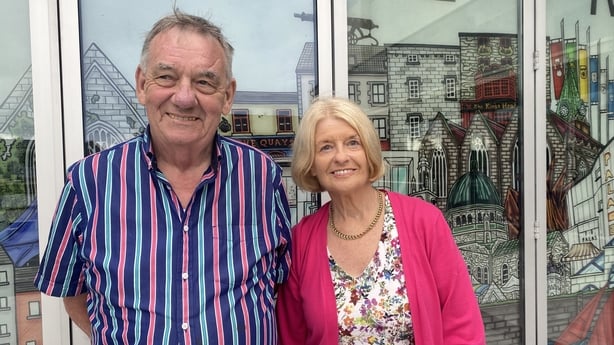
Norrie Quinn was 13 at the time and was one of the Irish dancers entertaining President Kennedy in Eyre Square. She recalls how nervous she felt about getting her steps wrong.
"It would have been a disaster for the other girls and boys who were dancing. But we had practiced hard for months and we did well on the day. It was an eight-hand reel and it was wonderful to see the president tapping his foot to the Irish music".

Her husband Martin has his own memories etched in his mind forever.
"I lived on College Road across the road from the sportsground and to hear American helicopters landing was phenomenal. We ran alongside the cavalcade down to Eyre Square and it was just magic."
He recalls JFK being absorbed by the crowd and delivering a "spellbinding" speech.
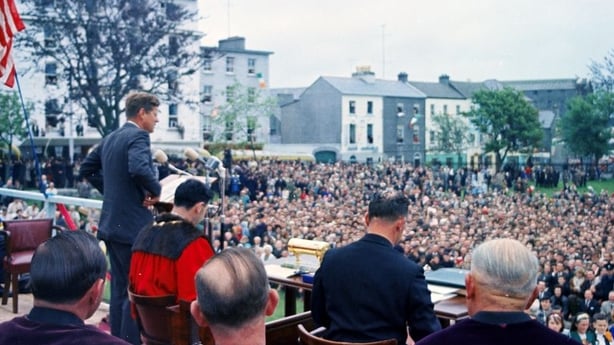
"He spoke about Galway like it was the next parish to Boston. This was the 1960s and we were moving from black and white to colour tv. And JFK was part of that glorious colour. He was like a movie star, this man with a fabulous suit and oozing with charm and none of us could take our eyes off him".
For Martin, it was a year like no other.
"Our famous three-in-a-row team won the All Ireland later that year. The Galway Cathedral was being built and a group of lads called The Beatles were emerging out of Liverpool and taking the world by storm. What a time to be alive!"
Carmel Kenny was chosen to form part of the 'human flag' for the president's arrival and she laughs aloud at the memory of fearing she would see nothing at all.
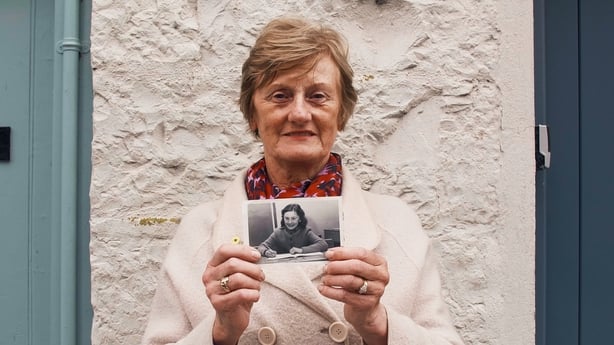
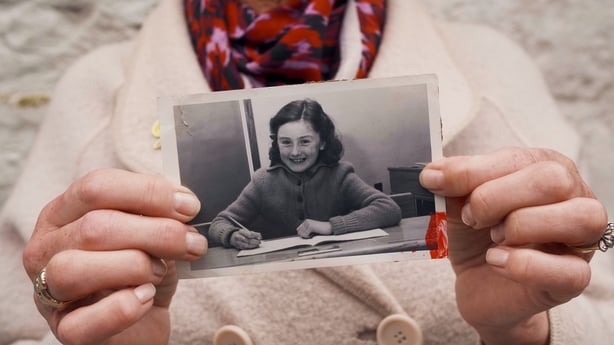
"I was in fourth class in national school at the Convent of Mercy so it was time off to practice in the nuns' garden across the road. Sr Assumpta was in charge and she would run up to a top window and make sure we were all lined up and standing straight.
"One instruction we were given was to keep our heads down. We were going to form the green, white and gold tricolour. I was part of the white flag section. So we were marched down to the sports ground and our heads were going to be covered and that was one of the first things he was going to see".
Carmel was disappointed that she would not get to see the helicopter, but the president landed and moved by his security staff to reach out and say hello to the children.
"We weren't being kept away from him nor he from us. Maybe because we were children he came over to us. It was all very relaxed and then he got into big car and the cavalcade took off and we ran after the car."
Carmel was too young to remember the president's speech, but she has read it many times over the years and described it as "a fabulous speech".
Brendan Fox remembers hearing the helicopters landing behind a long wall.
"The anticipation and the excitement was just incredible. The people and the flags and the bunting. It was like nothing else before. It's difficult to describe. It was euphoric".
Brendan humorously tells his own tale of missing out on a handshake with JFK as he ran alongside the cavalcade.
"I went between two garda motor motorbikes, and I lifted my hand up to JFK and he turned and he put his hand out to me and we were just about to touch when the garda lifted me out over the motorbike and I was very disappointed because you know, I got within six to eight inches of shaking hands with the most popular man in the world at the time," he said.
He added: "I continued to follow the cavalcade and people said was it because of the excitement of the day? And I said no, it was because I was so angry with the guard, and I wanted to let him know that".
The documentary is directed by Galway woman Pam Finn, and the title is 'JFK: The Three Miles'.
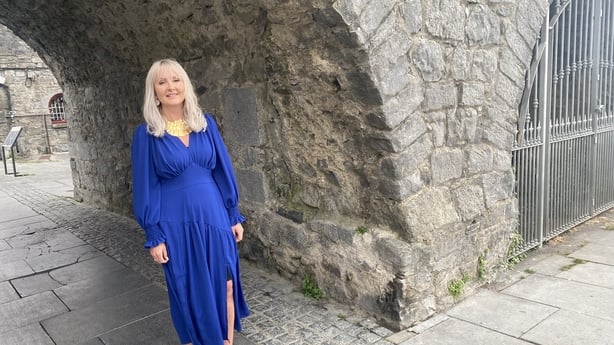
It opens with the distinct Boston voice of JFK ringing out to thousands of people hanging on his every word.
"If the day was clear enough, and if you went down to the bay, and you looked west, and your sight was good enough, you would see Boston, Massachusetts. And if you did, you'd see down working on the docks, some Doughertys and Flahertys and Ryans, and cousins of yours who have gone to Boston and made good".
"This project is like an oral history that can be shared with generations to come"
Pam explains what inspired her to make the documentary.
"A lot of us are familiar with the online archival footage of the JFK visit but I wanted to tell the story from a Galway perspective, with eyewitness accounts from people who haven't had the opportunity before to go on camera or to tell their story. Many are now in their 70s. It was 1963 and he travelled three miles in around 70 minutes. And it has such an impact to this day. It's incredible," she says.
She added: "I'm third generation and I still hear stories about John F. Kennedy's visit to Galway. So this project is like an oral history that can be shared with generations to come".
The Irish premiere takes place in the Pálás Cinema on 24 June. And it will then be available to view free of charge in the Galway City Museum this summer.
The US premiere will be in the JFK Hyannis Museum in Cape Cod on 29 June, giving the documentary a significant international platform.
An exhibition of artefacts from the visit will also be on display including a letter from the President and a hand stitched American flag which only came to light recently.
"It's okay lads, he's my friend"
Stan Shields is a retired photographer and fondly recalls the president calling him a ‘friend’.
"We met at the sportsground and you could not come across a more down-to-earth fella. And that's what it's all about. He was sitting in the car and I went up to him and said 'I'm Stan Shields from the local press, Connacht Tribune, and he said he was John F. Kennedy. I opened the front door of the car, jumped in, lifted up my camera and took a picture of him sitting.
"Two fellas jumped on top of me and pulled me out. And he said ‘It's okay lads, he's my friend’ and the two lads let me go. And the guards came along and said ‘sure that's Stan, sure he's one of our own’". Stan chuckles heartily at the memory of a lifetime.
Local businessman Anthony Ryan speaks of the Kennedy’s kindness, as he stopped his motorcade at the family’s home on the drive to Salthill to wish his elderly mother well, and shake her hand. Anthony's father, Paddy, was Mayor of Galway at the time.
"We were all at the front gate of the house. My grandmother was there, all my brothers and sisters and a lot neighbours aswell. He said hello to my grandmother and met us all. I remember shaking his hand and he was a very tall, debonair man and his charisma oozed all over the place. I remember it so clearly. It probably lasted one minute but it was a very, very significant minute. And then they got back into the car and travelled on down to Eyre Square"
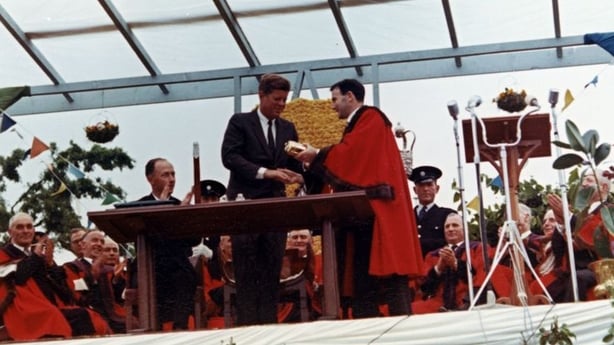
President Kennedy concluded his 90-minute, three-mile trip by inviting everyone to Boston.
"I don't know what it is about you that causes me to think that nearly everybody in Boston comes from Galway," he said.
He said they would get the 'Céad Míle Fáilte' which he then translated in English. The crowds cheered and applauded as he waved goodbye to Galway for the last time.
Tommy McDonagh sums it up best.
"Ah, it was one of the best days of my life. We had great fun and a great run".
Five months later, JFK was assassinated in November 1963. At the request of First Lady Jacqueline Kennedy, Galway man Commandant Leo Quinlan was one of 26 to provide a guard of honour at the president’s graveside.
Michael Broderick encapsulates what JFK meant to the people of Galway.
"It was incredible the way he was able to connect with the Irish people. He really bought into Ireland and we bought into him. He was really one of our own," he said.
He added: "A man that had made good, a family that had made good, had risen to the top job in the world, the most powerful person in the world. And he was coming back to his roots really and we were giving him the céad míle fáilte".







